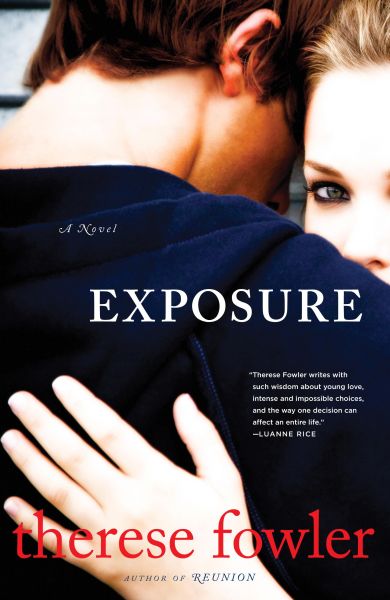 Synopsis:
Synopsis:
Amelia Wilkes is, in most respects, a typical seventeen-year-old high school senior, with big dreams of studying drama at New York University and eventually forging a career as a Broadway performer. She plans to be joined in her studies, her career aspirations, and her life by her boyfriend, Anthony Winter, a handsome, sensitive senior who has already celebrated his eighteenth birthday. They are in love for the first time in the way that only naive high school sweethearts with raging hormones can be — the way that most parents recall themselves feeling and acting with a combination of fond nostalgia and apprehension about their child’s inevitable collision with life’s realities.
While the emotions and foibles of youth may have been the same for countless generations, the manner in which young love plays out has changed dramatically with the proliferation of cheap, readily-available technology. Simply put, nearly every teenager owns or has access to a cell phone, and a built-in camera is a standard feature included on most cell phone models. Teens also have access to the internet, at school if not in their homes and via their cell phones. The result is a phenomenon known as “sexting” — exchanging nude or semi-nude photos of oneself via text message.
Amelia and Anthony decide that because they are deeply in love and committed to a future together, they are ready for their relationship to evolve into a physical expression of their feelings. Somewhat surprisingly, it is Amelia, a heretofore innocent and decidedly unworldly young woman, who begins snapping photos of Anthony during their tryst. When she later discovers that the lighting conditions resulted in inferior snapshots, she asks Anthony to take more photos of himself and send them to her via email. Despite feeling awkward at first, Anthony complies and sends several nude photos to Amelia, who is away for several weeks vacationing with her parents. Soon, as their relationship progresses, they add more shots of each other to their growing gallery.
Anthony’s mother, Kim, teaches French and art classes at the exclusive private high school, Ravenswood, that Anthony and Amelia attend. A single mother who has raised Anthony alone and maintains a close relationship with her son, Kim is aware of their relationship and has honored the couple’s request that it remain a secret from Amelia’s parents. Amelia’s father is a domineering, self-made businessman who owns several vehicle dealerships and believes that his daughter should attend Duke University to major in a sensible subject until marrying the young businessman that he will select for her. Although Amelia, an only child, has been spoiled and pampered, her father views her dance, voice, and music lessons as merely “distractions,” rather than the foundation of the career for which Amelia longs. And he would definitely not approve of his “Ladybug’s” (his pet name for Amelia) dalliance with a boy from a broken home who lives with his single, working mother on the poor side of town and spends his days contemplating Shakespeare’s sonnets. Amelia is simply biding her time, seeking to peacefully live out the 220 days that stand between her parents’ goals for her and her eighteenth birthday, when she will be able to defy her father and his design for her life by announcing her plan to go to New York with Anthony.
But in the meantime, Amelia has spent weeks constructing a PowerPoint presentation for her fifth period class. Unfortunately, she forgot her laptop at home and her mother cannot drop it off at the school because she is out of town for the day. So Amelia runs back home during her lunch break to retrieve the computer and is surprised to find that her father, Harlan, has guessed her password and viewed some of the files stored on the hard drive, including the photos of that Anthony emailed to Amelia. At that moment, the lives of the Wilkes and Winters families are forever changed, their futures rewritten.
Review:

Some reviewers have dubbed Anthony and Amelia’s story a tale about Romeo and Juliet in the age of technology. The comparisons are valid: The two teenagers are desperately in love and determined to be together, and their parents are at odds. Exposure is a morality play, with different characters representing various sociological and ethical viewpoints impacting the young lovers who, like teenagers since the dawn of time, naively engage in sexual behaviors. However, they enhance their conduct using available technology without understanding that devastating consequences could follow. Amelia’s mother recalls that not so long ago Polaroid cameras — especially one model aptly named, perhaps, “The Swinger” — featuring instantly developed photos brought new possibilities to intimate relationships, but those photos were not transmitted electronically.
Nor were such photos discovered by a man who believed until the moment he was confronted with undeniable evidence to the contrary that his only daughter had remained, and would remain chaste because he demanded that she do so. Harlan Wilkes is a somewhat stereotypical, but still fully authentic, old-fashioned, overly protective father who refuses to accept that his daughter could be capable of engaging in very grown-up behavior. He is used to having his own way, both at home and in business, as evidenced by the fact that he dials the local chief of police’s direct line when confronted by police officers. His over-the-top attempt to shield his daughter and maintain her innocence sets into motion a series of events that prove catastrophic for all concerned. Harlan Wilkes is the antagonist in this morality play, but his motives, however misguided, are tragically pure.
Unfortunately, since Wilkes is a local entrepreneur, he is acquainted with the local district attorney, a mega-conservative with eyes on the governor’s mansion who believes that prayer in the public schools should not only be legal, but mandatory. In his zeal to make a name for himself in the political arena, the district attorney is willing to probe the boundaries of the law, with Anthony and Amelia as his test subjects. Given that the story is set in North Carolina, this particular plot device works, whereas it most likely would not were the setting San Francisco or some other more urbane locale.
Kim Winter is the parent who understands teenagers because she is around them each and every day. Unlike the Wilkeses, she is aware of what is happening in her son’s life because he, like the rest of the students at Ravenswood, considers her reasonable and supportive. She stands by her son when he is accused because, like him, she had no idea that the behavior at issue could result in criminal charges and even incarceration. She regrets her own innocence and wishes that she had warned both her son and his fellow students but, as the school principal sagely observes, they thought that some conduct would simply be understood to fall outside the bounds of acceptable behavior. Obviously, given the available technology and Anthony and Amerlia’s behavior, that assumption was erroneous.
Yet Kim is the character who makes the point, during a consultation with Anthony’s attorney, that given Amelia and Anthony’s ages, they did not break any laws by engaging in a sexual relationship and, with her parents’ consent, the two young people could even marry. However, when one of the participants is under the age of eighteen, sexting photos legally constitutes child pornography and the participant who is eighteen years of age or older can be deemed to have transmitted inappropriate materials to a minor or, worse, coerced the minor into engaging in the behavior. Tragically, both participants can find themselves labeled sex offenders and be required to register as such for a significant period of time, if not their entire lives.
Exposure is a novel that should be read by parents of teenagers with more than simply a desire to enjoy a good story. For that reason, it is an important book that can provide a great service to families by opening up a dialogue between parents and teenagers, who need to understand that sexting can result in criminal charges. The dark reality of today’s technology is the fact that suggestive images innocently sexted to a trusted friend could end up on pornographic or other websites; images never truly disappear once they have been electronically transmitted. Amelia bemoans the fact that Duke University, after hearing about her circumstances, withdraws its offer of admission. Such consequences, part of a fictional storyline, are representative of the real life harm that can result from reckless conduct. Educational opportunities, careers, and relationships can all be lost because of behavior wrongly believed to be nothing more than teen-age fun.
Exposure is a gripping page-turner, largely because Fowler has made each character so authentic that it is easy to emotionally bond with them. Thus, readers are compelled to learn their ultimate fate as Anthony and Amerlia’s predicament becomes increasingly serious and their futures ever more perilous.
Fowler says that writing the book was easy because she had already lived the scenario, but difficult at the same time, since “the story inside the book is not my son’s, nor mine — I knew I was putting my son and myself in a position where we would be judged. All the while, though, I was telling myself, ‘Think of what books can do.'” Her book has the potential to save families from suffering what Fowler’s fictional families endured in Exposure. Fowler is wrong when she states that her act of telling the fictional story that arose out of her own family’s experience “was not, to me, a brave act.” It was. But she is correct when she notes that her she was presented with an “opportunity to tell a story that reminds us all, ‘To err is human’ — which is especially true when deep emotions are involved.” She says she actually felt obligated to tell the story of a group of “well-meaning people whose actions and choices add up to a cautionary tale” that she hopes will giver her readers, “at the very least, many hours of good reading.” Fowler has succeeded spectacularly on both levels.



4 Comments
Thanks for the phenomenal review of Exposure. I’m glad you liked it so much. It shows in the details you provide. I really wanted to read this one for the tour, but I couldn’t fit it in. I’m still kicking myself.
I hope your readers will check this one out.
Excellent review. You gave me a great feel for the book. Sounds like an important and well-written story, and one that I have just put on my to read list.
Pingback: Saturday Review of Books: June 4, 2011 | Semicolon
Pingback: Saturday Review of Books: May 28, 2011 | Semicolon